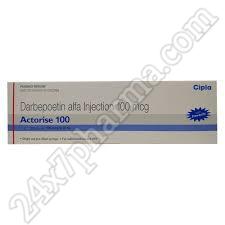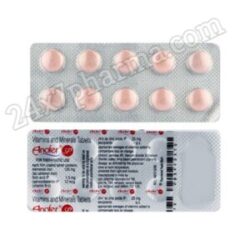About WEPOX 5000 IU Injection
WEPOX 5000 IU Injection is a powerful treatment option primarily used to manage anemia, particularly in patients with chronic kidney disease or those undergoing chemotherapy. This medication contains Epoetin Alfa, a synthetic form of erythropoietin, which stimulates the production of red blood cells. It is delivered through an injection, usually administered by a healthcare professional, to help increase red blood cell count and improve overall health.
How Does WEPOX 5000 IU Injection Work?
WEPOX 5000 works by mimicking the action of Erythropoietin injection, a hormone that is naturally produced by your kidneys. Erythropoietin stimulates the bone marrow to produce red blood cells. The WEPOX Injection helps to boost red blood cell production, thereby improving oxygen delivery to tissues and alleviating the symptoms of anemia, such as fatigue and weakness. By increasing red blood cell production, it effectively helps manage anemia in patients with chronic kidney disease, those undergoing chemotherapy, and other related conditions.
What Are They Used For?
WEPOX 5000 IU Injection is primarily used for treating anemia caused by chronic kidney disease (CKD) and chemotherapy. For patients with CKD, the kidneys cannot produce enough erythropoietin, leading to a drop in red blood cells. WEPOX helps in restoring this process. In chemotherapy patients, the treatment often causes a decrease in red blood cell production, leading to anemia. WEPOX injection boosts red blood cell counts, helping these individuals maintain better energy levels and reduce the effects of anemia.
Alternative Doasges
Side Effects of WEPOX 5000
Like any medication, WEPOX 5000 IU Injection may cause side effects, though they are not experienced by everyone.
Common side effects include
- Headaches,
- Dizziness,
- Fatigue
- nausea.
Some individuals may also experience joint or muscle pain, fever, or redness at the injection site. In rare cases, allergic reactions or more severe effects like high blood pressure, blood clots, or stroke may occur. It’s essential to monitor any changes in health and consult your healthcare provider if you experience unexpected symptoms.
Precautions & Warnings
Before starting treatment with WEPOX 5000 (Erythropoietin injection), ensure that your healthcare provider is aware of any underlying health conditions, especially high blood pressure, heart disease, or a history of stroke. WEPOX injection may not be suitable for individuals with certain conditions, and your doctor will adjust the dosage or recommend an alternative treatment. Pregnant or breastfeeding women should consult their doctor before using WEPOX. Always follow your healthcare provider’s instructions for proper dosing to avoid potential risks. Keep all follow-up appointments to monitor red blood cell counts and overall health.
By using WEPOX 5000 IU Injection appropriately and with close medical supervision, you can effectively manage anemia and improve your quality of life. Stay informed and engaged with your treatment plan to ensure the best results.
Frequently Asked Questions (FAQs)
Q1. How does WEPOX 5000 IU Injection work to treat anemia?
WEPOX 5000 works by mimicking the action of erythropoietin, a hormone naturally produced by your kidneys. Erythropoietin signals your bone marrow to produce red blood cells. By injecting WEPOX, you’re boosting this natural process, helping your body create more red blood cells, which can relieve the symptoms of anemia.
Q2. Are there any precautions I need to take before using WEPOX 5000?
Yes, before using WEPOX 5000 IU, inform your doctor if you have high blood pressure, heart disease, or a history of stroke. WEPOX may not be suitable for everyone, and your doctor may need to adjust the dosage or recommend alternative treatments.
Q3. What happens if I experience side effects while using WEPOX?
If you experience any side effects, particularly severe reactions like difficulty breathing, swelling, or chest pain, seek immediate medical attention. For less severe symptoms, contact your healthcare provider to discuss your options and determine if your treatment needs to be adjusted.









